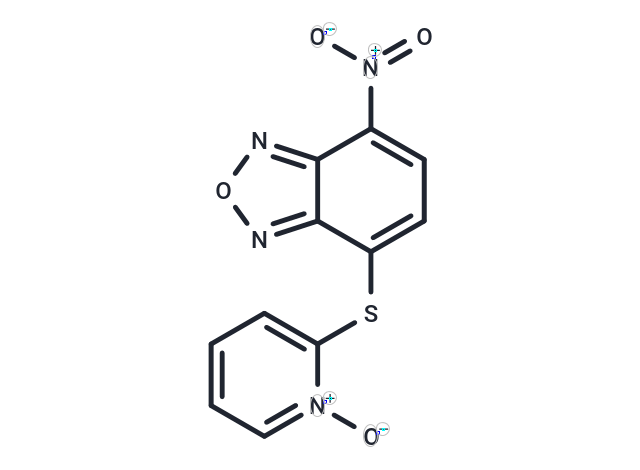Shopping Cart
- Remove All
 Your shopping cart is currently empty
Your shopping cart is currently empty

NSC 228155 is an activator of EGFR, binding to the sEGFR dimerization domain II and modulating EGFR tyrosine phosphorylation.

| Pack Size | Price | Availability | Quantity |
|---|---|---|---|
| 2 mg | $30 | In Stock | |
| 5 mg | $43 | In Stock | |
| 10 mg | $61 | In Stock | |
| 25 mg | $127 | In Stock | |
| 50 mg | $216 | In Stock | |
| 100 mg | $389 | In Stock | |
| 200 mg | $521 | In Stock | |
| 1 mL x 10 mM (in DMSO) | $48 | In Stock |
| Description | NSC 228155 is an activator of EGFR, binding to the sEGFR dimerization domain II and modulating EGFR tyrosine phosphorylation. |
| Targets&IC50 | KIX-KID:0.36 μM |
| In vitro | NSC 228155 promotes transactivation of several RTKs, including ErbB2 and ErbB3, Insulin R and IGF-1 R receptors in the cells. It stimulates dimerization of sEGFR domain II[1]. NSC 228155 can rapidly move across cell membranes and disperse within both cytoplasmic and nuclear compartments. It rapidly generates hydrogen peroxide within cells[2]. NSC 228155 is also a potent inhibitor of KIX-KID interaction(IC50 = 0.36 μM), but it is not particularly selective against CREB-mediated gene transcription in HEK 293T cells[3]. |
| Cell Research | MDA MB468 cells serum-starved overnight are pre-incubated (or not) with 10?μM AG1478 or 2?μM PD 153035 for 90?min and then, where indicated, incubated with 100?μM NSC 228155 or CN 009543V or 150?ng/ml EGF or vehicle (0.2% DMSO) for 15?min. Proteins are blotted to nitrocellulose membrane and analyzed with biotinylated anti-pTyr P100, anti-pEGFR Y1068 and anti-EGFR (epitope in cytoplasmic region) antibodies. (Only for Reference) |
| Alias | NSC228155 |
| Molecular Weight | 290.25 |
| Formula | C11H6N4O4S |
| Cas No. | 113104-25-9 |
| Smiles | [O-][N+](=O)c1ccc(Sc2cccc[n+]2[O-])c2nonc12 |
| Relative Density. | 1.72 g/cm3 (Predicted) |
| Storage | Powder: -20°C for 3 years | In solvent: -80°C for 1 year | Shipping with blue ice/Shipping at ambient temperature. | |||||||||||||||||||||||||
| Solubility Information | Ethanol: < 1 mg/mL (insoluble or slightly soluble) H2O: < 1 mg/mL (insoluble or slightly soluble) DMSO: 12 mg/mL (41.34 mM), Sonication is recommended. | |||||||||||||||||||||||||
Solution Preparation Table | ||||||||||||||||||||||||||
DMSO
| ||||||||||||||||||||||||||

Copyright © 2015-2025 TargetMol Chemicals Inc. All Rights Reserved.